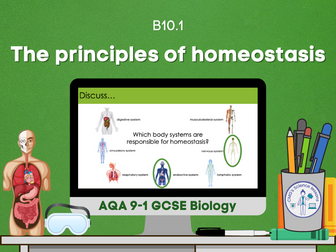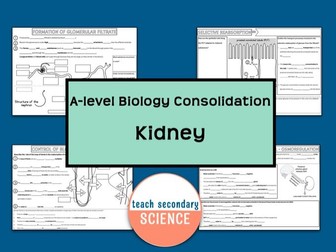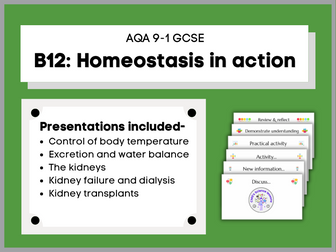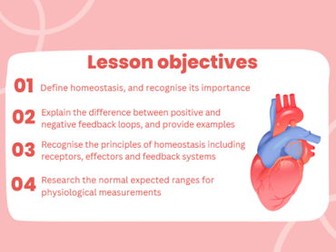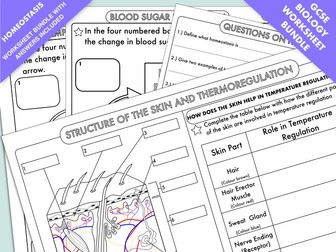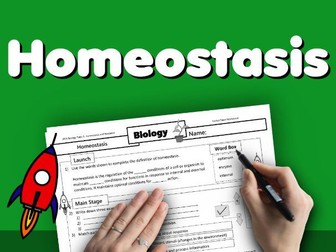Principles of homeostasis
<p><strong>During this lesson (B10.1 Principles of homeostasis) GCSE students work through a variety of tasks to develop their understanding of what homeostasis is and why it is important. Based on the 1st from the AQA 9-1 GCSE Biology (OUP scheme) B10: The human nervous system chapter</strong>.</p>
<p><em>Also available as a digital worksheet, which is ideal for distance learning, independent study or catch-up of missed work through absence</em>.</p>
<p><strong>Presentation contains (23 slides)</strong>-</p>
<ul>
<li>Bell work activity</li>
<li>Lesson objective and success criteria</li>
<li>Information slides</li>
<li>Challenge activities (group work)</li>
<li>Demonstrate understanding tasks (with answers)</li>
<li>Lesson resources (additional to scheme)</li>
</ul>
<p>Aimed at a mixed ability class covering content 1-8.</p>
<p><strong>Please note: Kerboodle worksheets from scheme are not included due to license</strong> (alternatives suggested where possible).</p>
<p>If you require more assistance, please contact me at-<br />
<a href="mailto:cmgeducationresources@gmail.com" target="_blank" rel="nofollow">cmgeducationresources@gmail.com</a></p>
